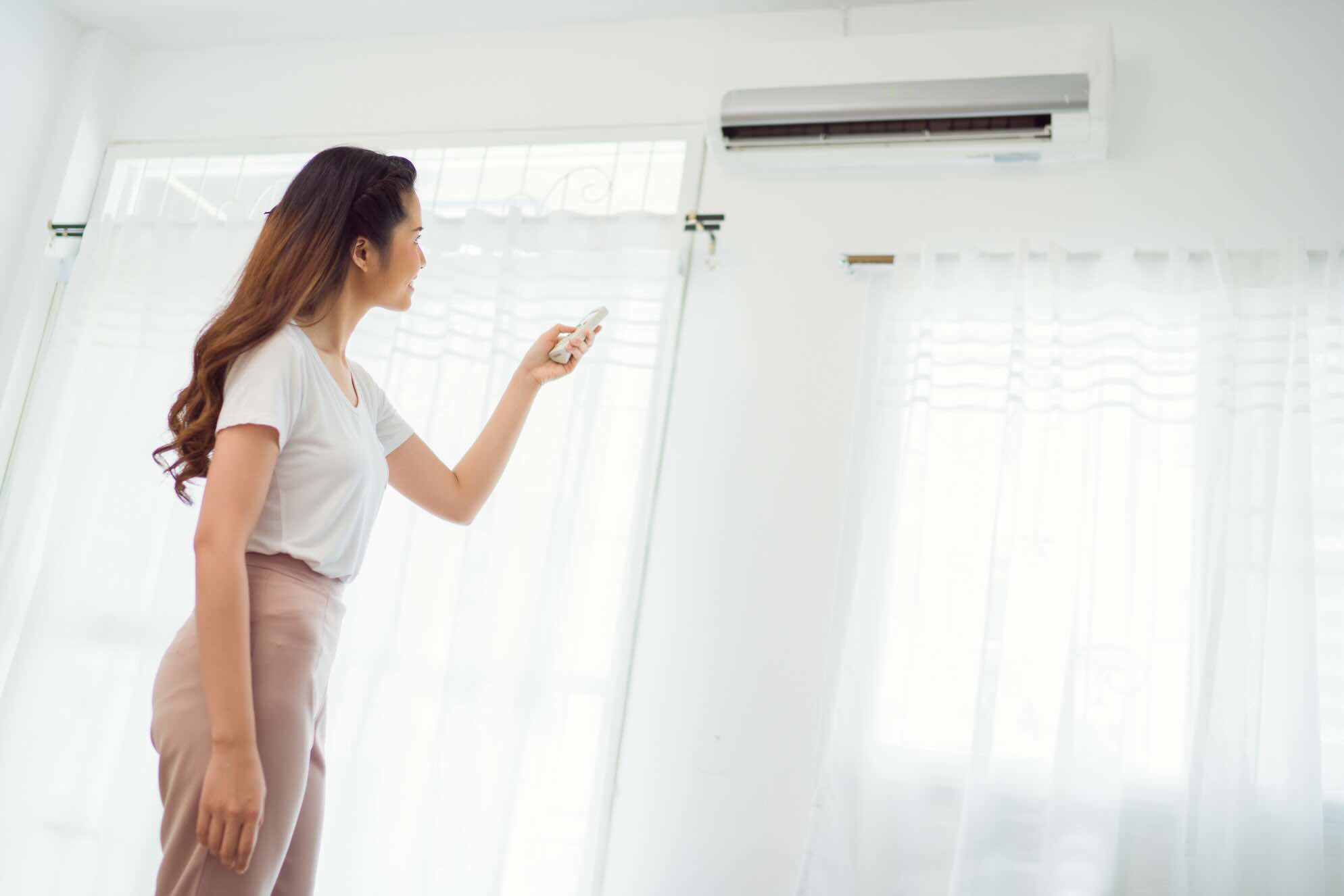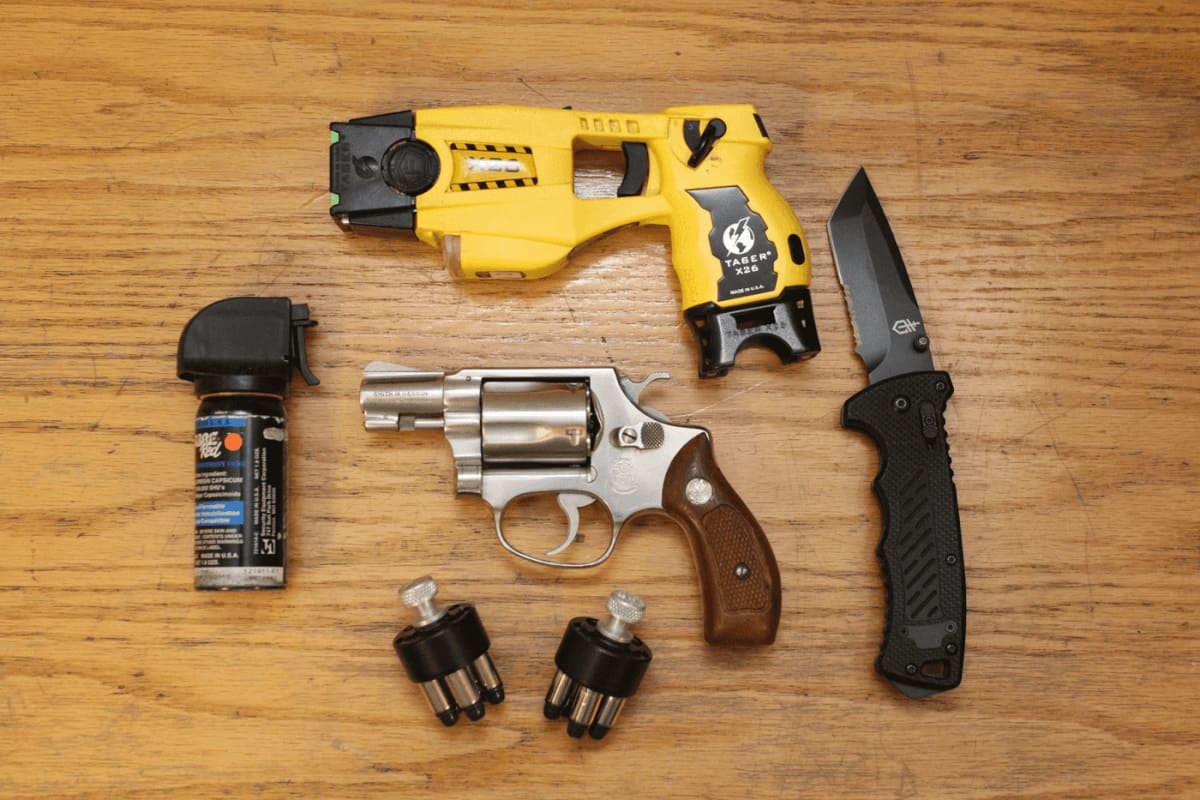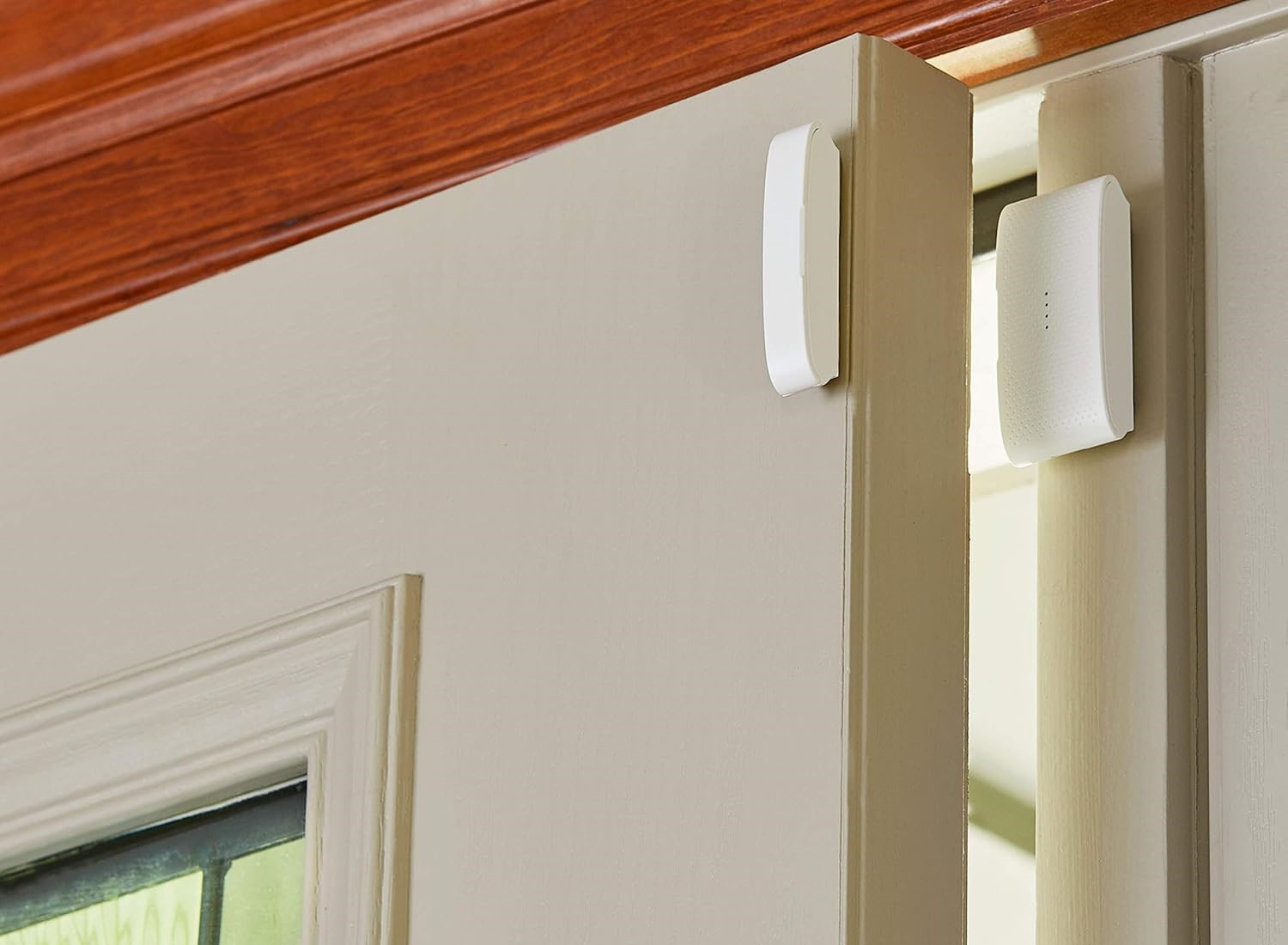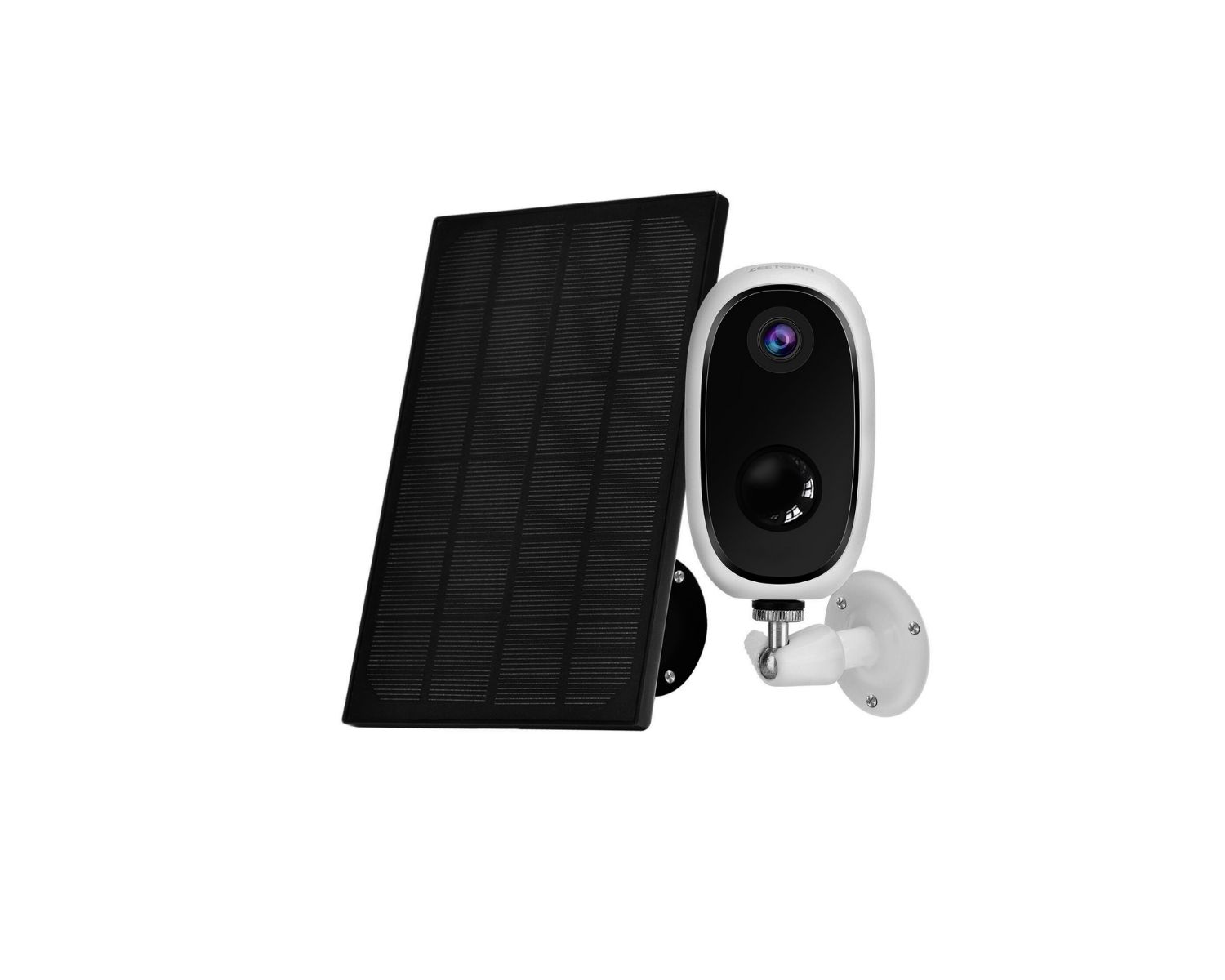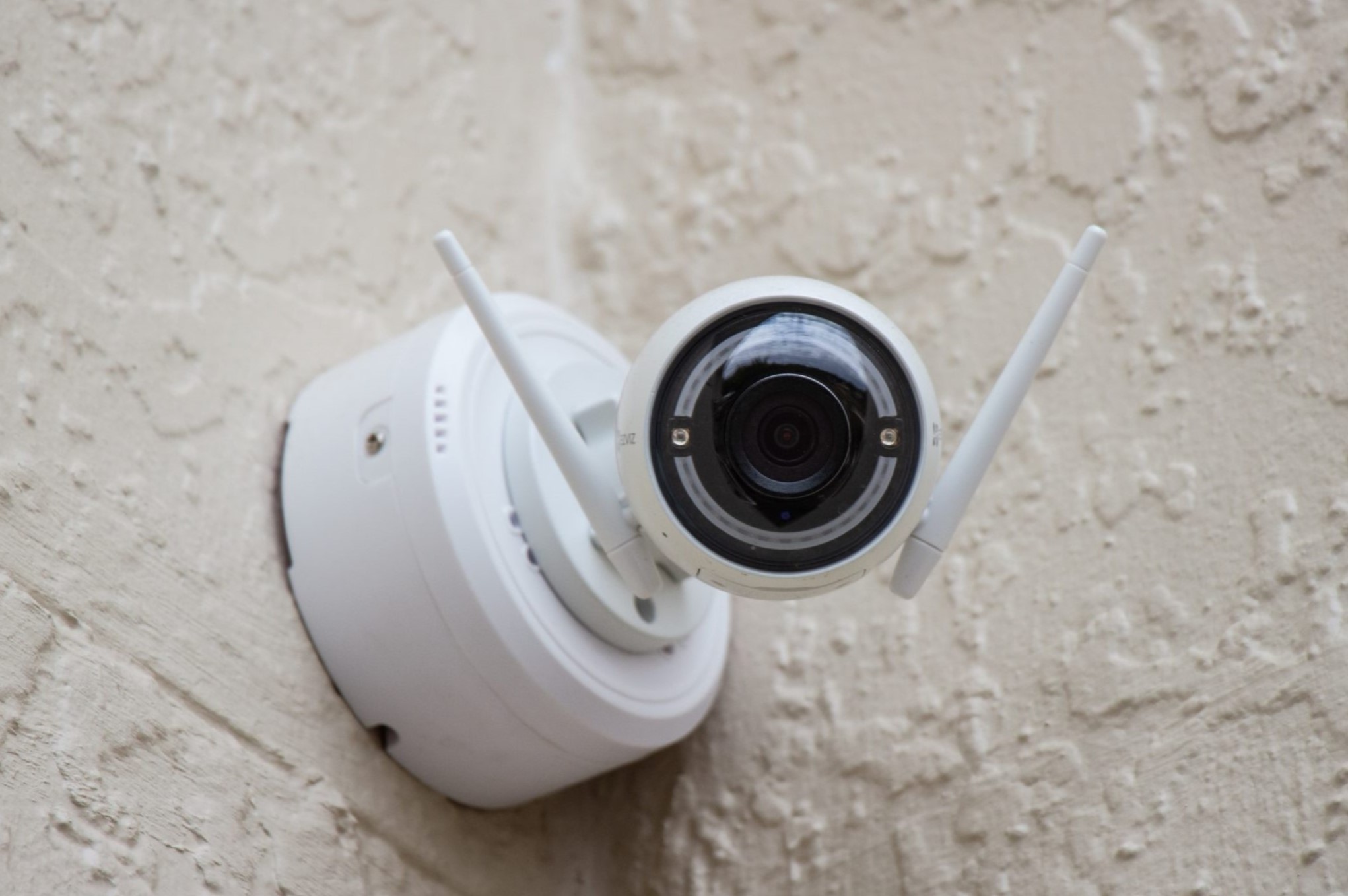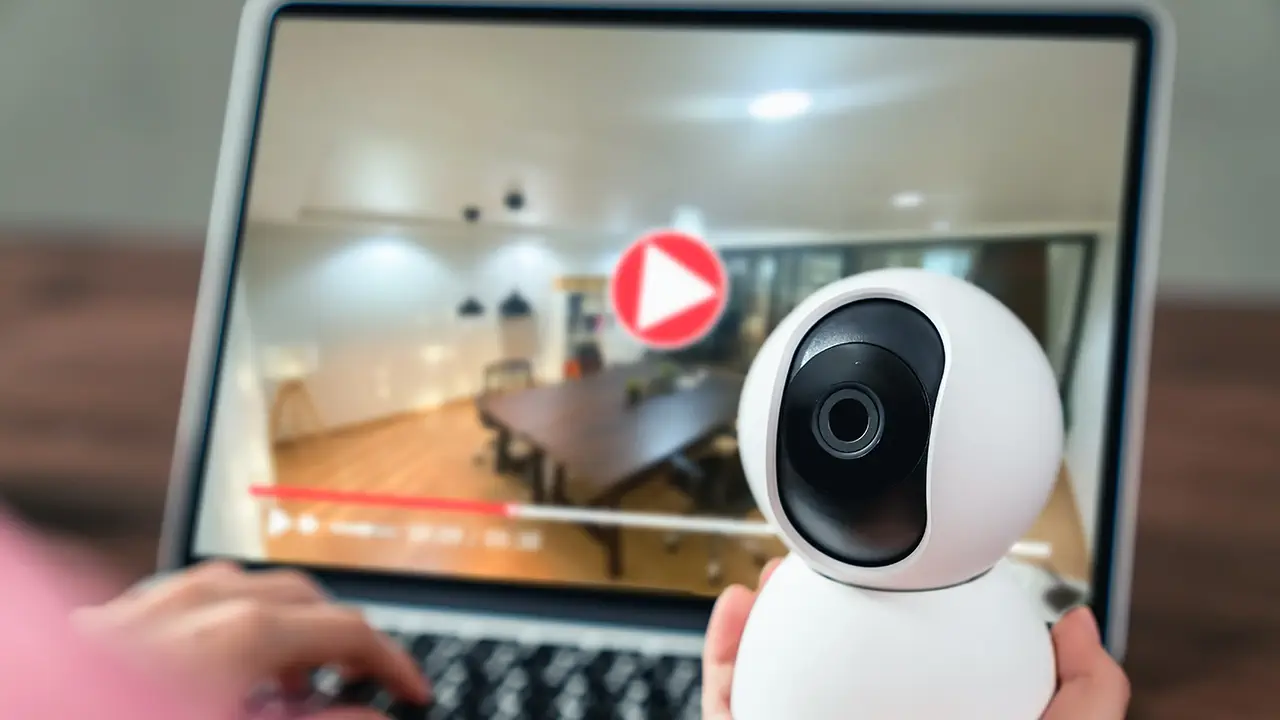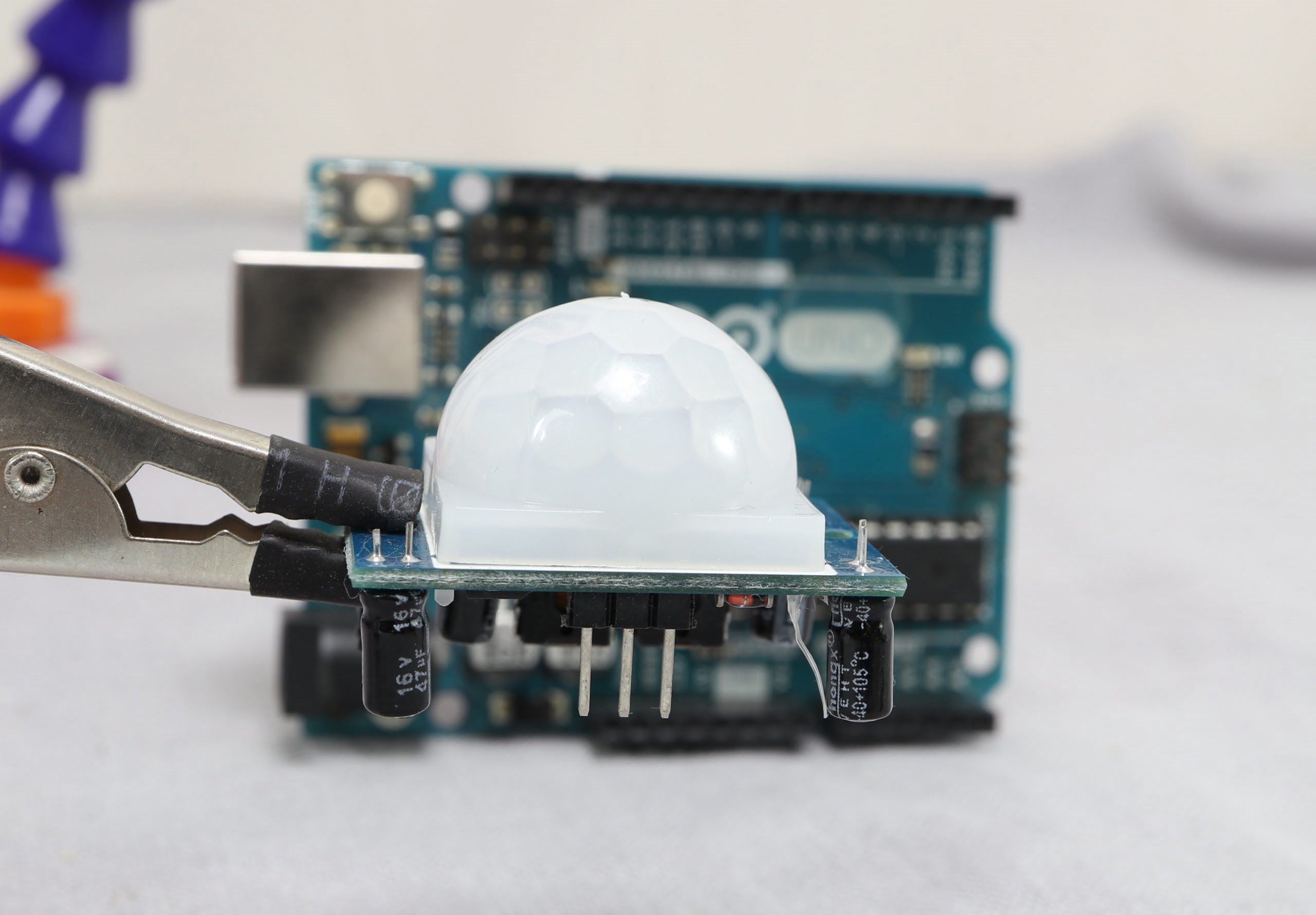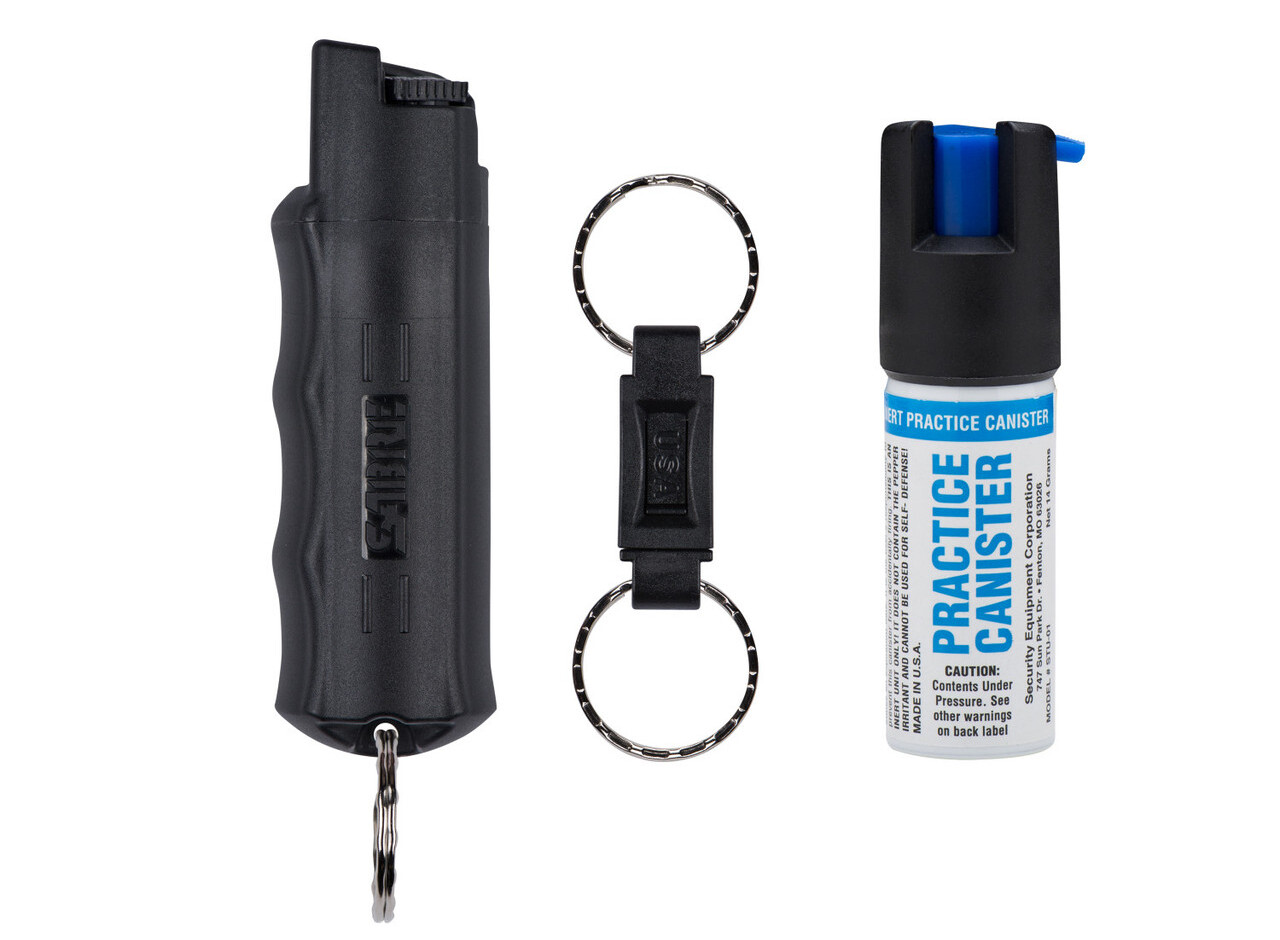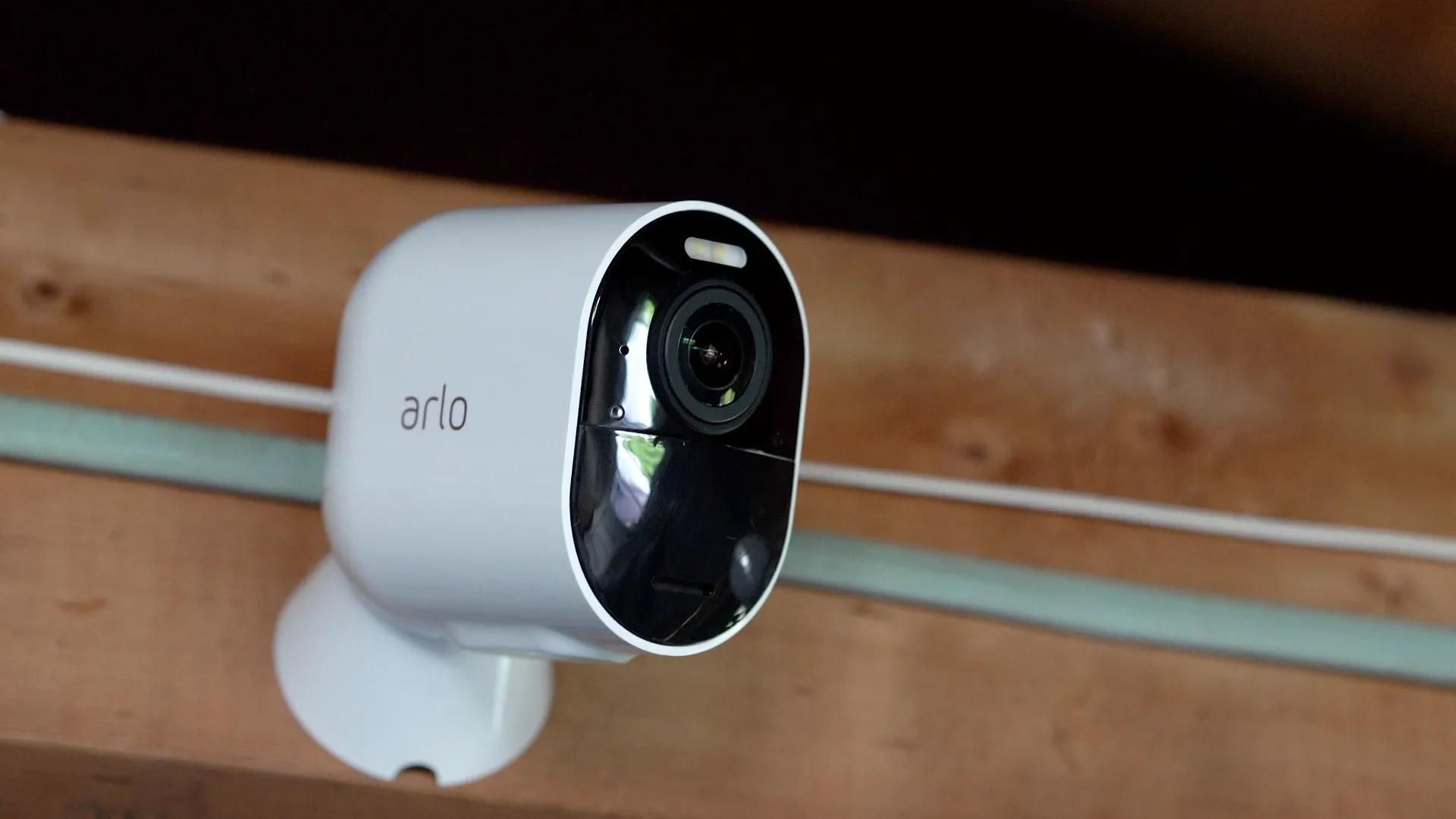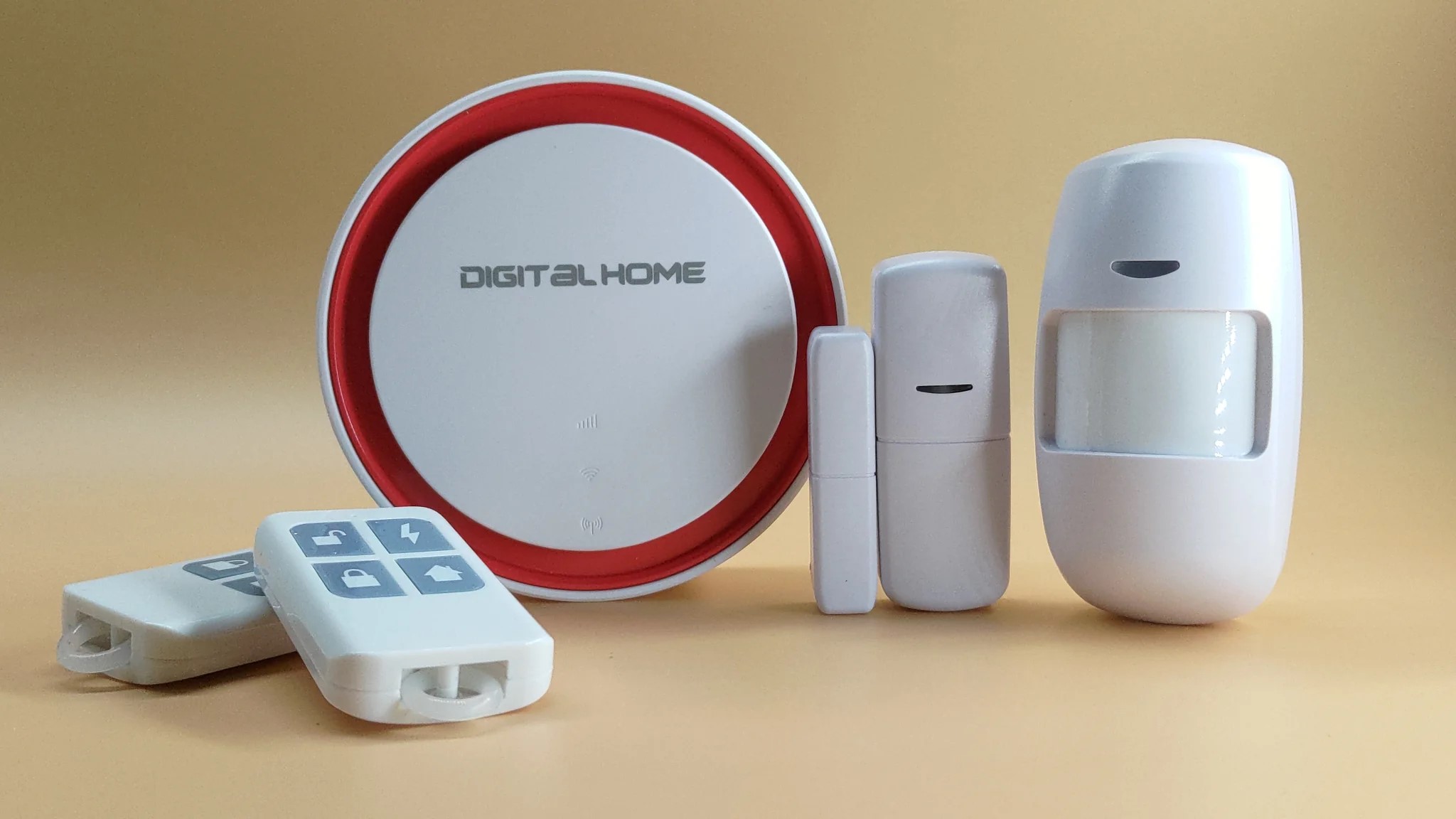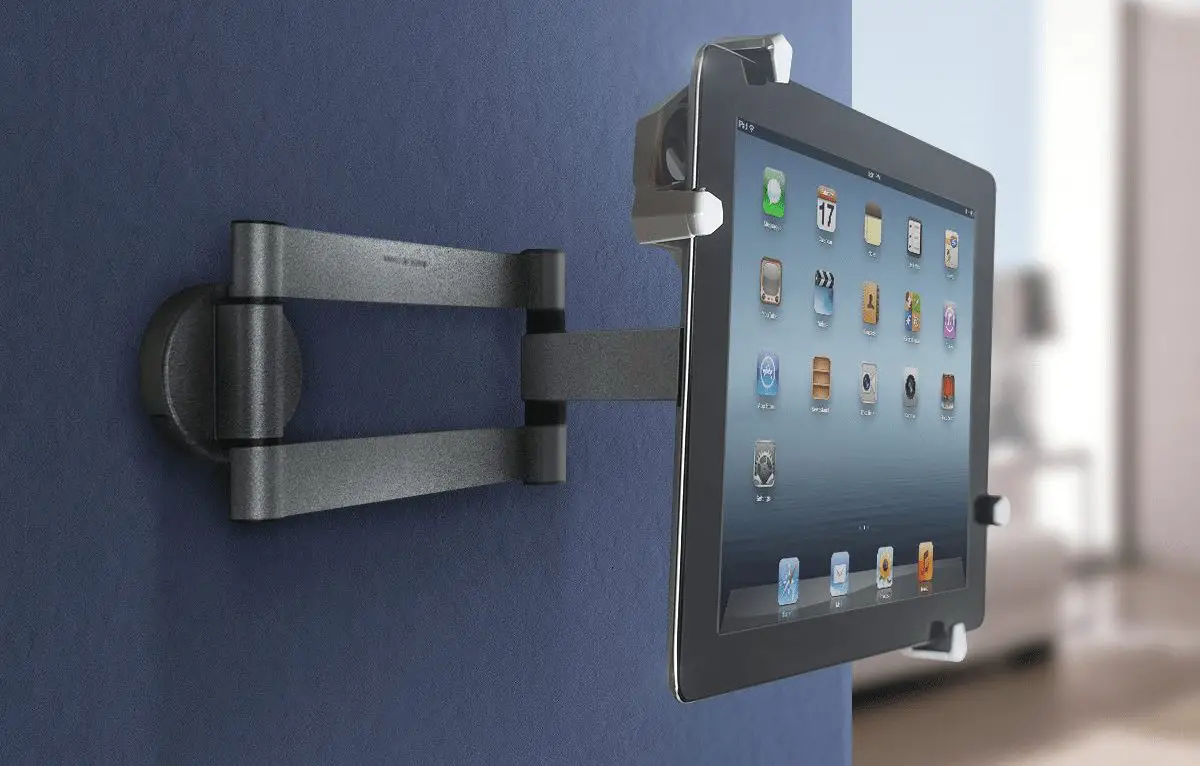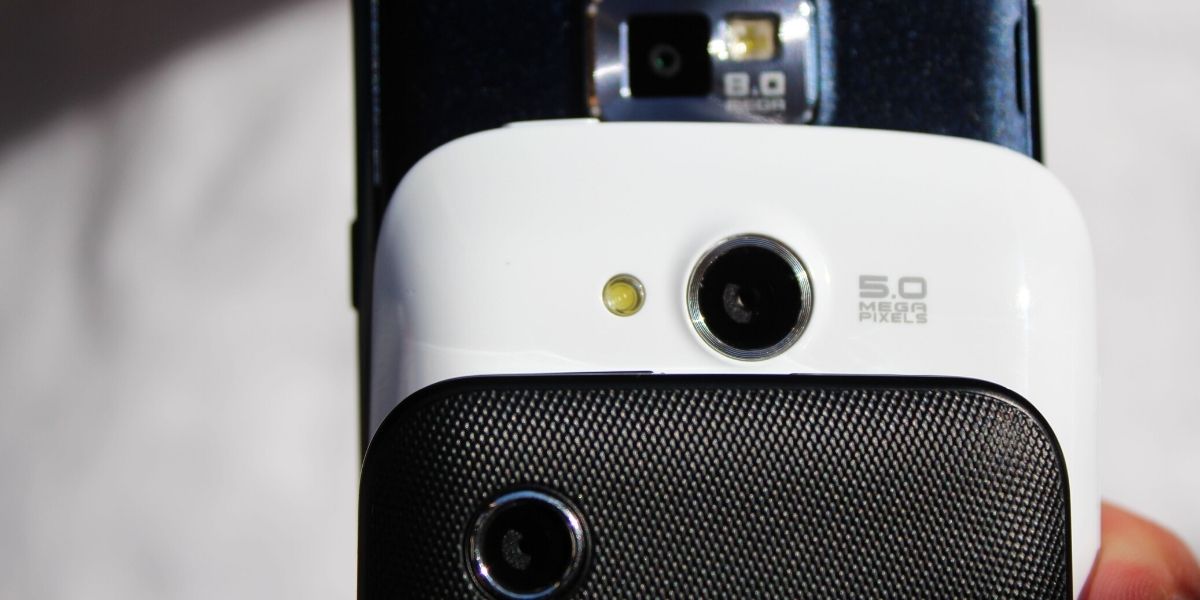Home>Home Security and Surveillance>Using Xbox With Kinect As A Home Surveillance System
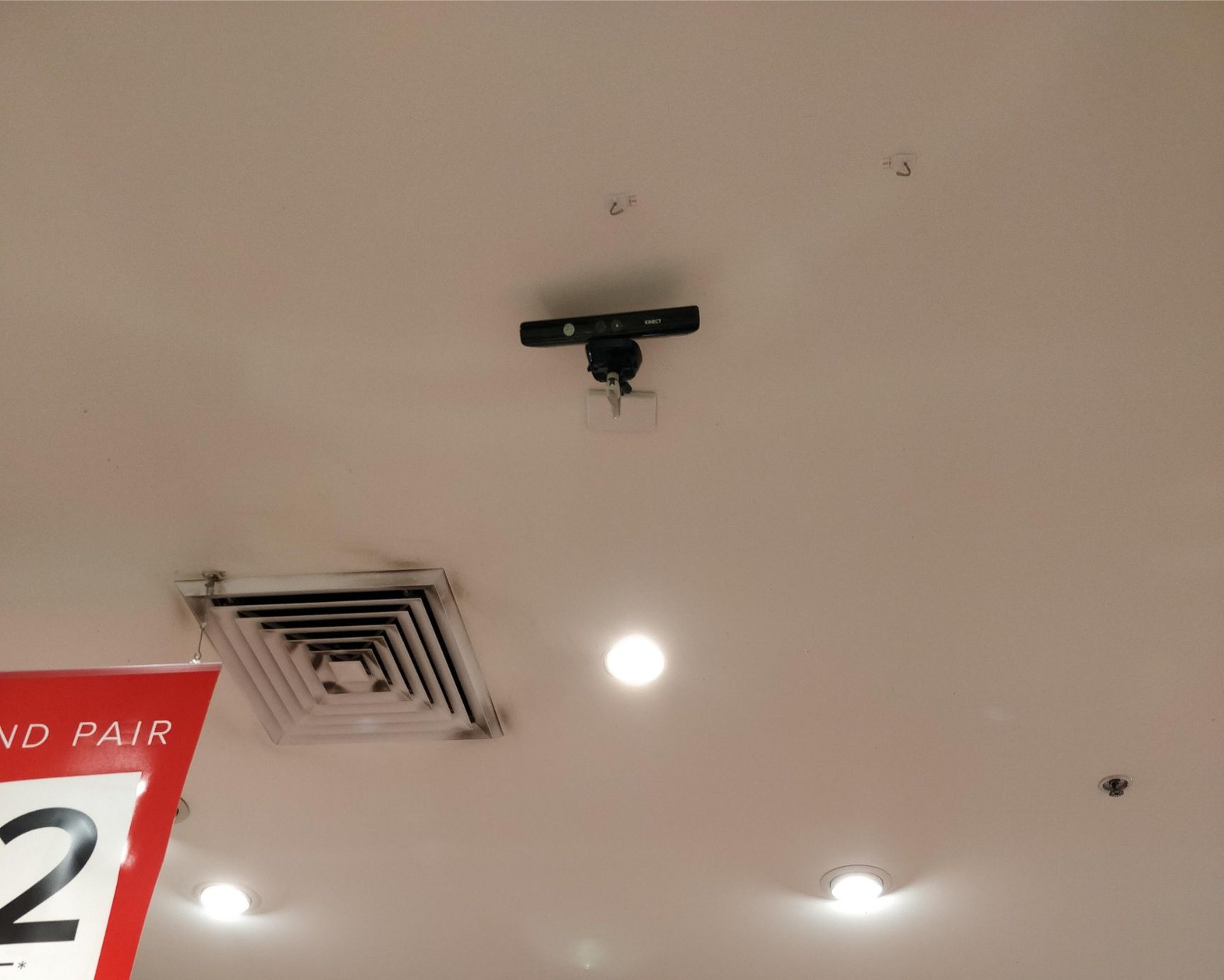

Home Security and Surveillance
Using Xbox With Kinect As A Home Surveillance System
Modified: March 6, 2024
Transform your Xbox with Kinect into a reliable home surveillance system. Enhance your home security and surveillance with this innovative solution.
(Many of the links in this article redirect to a specific reviewed product. Your purchase of these products through affiliate links helps to generate commission for Storables.com, at no extra cost. Learn more)
Introduction
Welcome to the world of home security and surveillance! In today’s technologically advanced era, there are numerous options available for keeping our homes safe and secure. One innovative solution that combines entertainment with surveillance is using an Xbox with Kinect as a home surveillance system. With its motion-sensing capabilities and advanced software, the Xbox with Kinect can be transformed into a powerful and cost-effective surveillance tool.
Setting up a home surveillance system can be daunting for some, but fear not! In this article, we will guide you through the process of configuring your Xbox with Kinect to create a robust surveillance system. We will cover everything from installing surveillance software to setting up motion detection and even accessing the system remotely.
Before diving into the technical aspects, let’s take a moment to appreciate the benefits of using an Xbox with Kinect as a home surveillance system. First and foremost, it offers a unique combination of entertainment and security, making it a versatile addition to any home. Additionally, the Xbox with Kinect’s motion-sensing capabilities provide a high level of accuracy and reliability for detecting movement and capturing footage. This ensures that you receive real-time alerts and high-quality video recordings.
Furthermore, using an Xbox with Kinect as a surveillance system is a cost-effective alternative to traditional security systems. Instead of investing in expensive cameras and DVRs, you can repurpose your existing gaming console and utilize its capabilities to enhance the security of your home.
Finally, the Xbox with Kinect is incredibly user-friendly. With its intuitive interface and easy-to-use features, you don’t need to be a tech expert to set up and operate the system. Whether you’re a seasoned gamer or a novice, you’ll find that configuring your Xbox with Kinect as a surveillance system is a straightforward and enjoyable process.
Now that we have highlighted the advantages of using an Xbox with Kinect as a home surveillance system, it’s time to delve into the details. Grab your gaming console, and let’s get started on transforming it into a powerful and efficient home security solution!
Key Takeaways:
- Transform your Xbox with Kinect into a home surveillance system for a fun and cost-effective way to keep your home safe. Enjoy the benefits of motion-sensing technology and remote access for added security and peace of mind.
- Enhance your home surveillance system by adding extra cameras, integrating with smart home technology, and utilizing cloud storage. Keep your home and loved ones safe with these creative and convenient enhancements.
Setting up the Xbox with Kinect
The first step in creating your home surveillance system using an Xbox with Kinect is to set up the hardware. If you already have an Xbox console and a Kinect sensor, you’re one step ahead. If not, you can easily purchase them online or from your local electronics store.
Once you have the necessary equipment, connect the Kinect sensor to your Xbox console. The Kinect sensor should be plugged into the dedicated port on the back of the console. Make sure everything is securely connected before powering on the console.
After successfully connecting the Kinect sensor to the Xbox console, power on the console and follow the on-screen setup instructions. This will include connecting to your Wi-Fi network, creating or signing in to your Xbox Live account, and updating the console software if necessary. Once the initial setup is complete, you’re ready to move on to the next step.
Before proceeding, it’s important to place the Kinect sensor in an optimal location. The sensor should be positioned above or below your television, aiming towards the area you plan to monitor. Make sure there are no obstructions that could interfere with the sensor’s ability to detect movement.
It’s also a good idea to adjust the angle and height of the Kinect sensor using the adjustable stand that comes with it. Experiment with different positions to find the optimal setup for capturing the best footage. Remember, the goal is to have a wide field of view that covers the desired area while minimizing blind spots.
Once you have positioned the Kinect sensor, you’re ready to move on to the software setup. Don’t worry; it’s easier than it sounds!
In the next section, we will discuss the installation of surveillance software on the Xbox with Kinect to turn it into a fully functional home surveillance system.
Installing surveillance software
Now that the hardware setup is complete, it’s time to install the necessary surveillance software on your Xbox with Kinect. One popular option is to use third-party apps specifically designed for home security and surveillance purposes.
Start by launching the Xbox Store on your console. Navigate to the “Apps” section and search for surveillance or security apps. Look for apps that have positive reviews and high ratings. Some popular options include “KiperCam,” “Xbox Security System,” and “iWatcher+.”
Once you have found a suitable app, select it and click on the “Install” button. The app will start downloading and installing on your console. This process might take a few minutes, depending on the size of the app and the speed of your internet connection.
After the app has finished installing, launch it from your Xbox’s home screen. Follow the on-screen instructions to complete the initial setup process. This will typically involve creating an account with the app, connecting the app to your Xbox with Kinect, and granting necessary permissions for the app to access the Kinect sensor and your network.
If you prefer a more customizable experience, you can consider installing home surveillance software that is compatible with Xbox consoles. Some popular options include Blue Iris, iSpy, and Xeoma. These software programs offer more advanced features and flexibility in configuring your surveillance system.
To install these software programs, you will need to visit their official websites using a computer or a mobile device. Look for the Xbox-compatible version of the software and download it. Follow the installation instructions provided by the software vendor to set up the program on your Xbox with Kinect.
Once the surveillance software is installed on your Xbox, you’re ready to move on to the next step: configuring your surveillance system.
In the following section, we will discuss how to configure the surveillance software to ensure optimal performance and functionality of your home surveillance system using the Xbox with Kinect.
Configuring the surveillance system
Now that you have installed the surveillance software on your Xbox with Kinect, it’s time to configure the system to meet your specific needs. This step involves customizing settings, adjusting sensitivity levels, and setting up alerts for enhanced security.
Start by launching the surveillance software on your Xbox. Navigate through the menu to find the settings section. Here, you can adjust various parameters such as video quality, resolution, and storage options. It’s important to strike a balance between video quality and storage space, depending on your preferences and available resources.
Next, configure the motion detection settings. Most surveillance software allows you to define motion detection zones and adjust sensitivity levels. This helps to minimize false alarms and ensure that only significant movements are detected and recorded.
To create motion detection zones, simply draw rectangles on the screen to designate the areas you want to monitor. For example, if you want to focus on your front door and backyard, draw rectangles around those areas. This way, the system will only trigger an alert or record video when motion is detected within these specific zones.
Adjusting sensitivity levels is crucial for accurate motion detection. If the sensitivity is set too high, even minor movements such as curtains swaying or pets walking by can trigger false alarms. Conversely, if the sensitivity is set too low, it may fail to detect significant movements. Experiment with different sensitivity levels to find the optimal setting for your surveillance system.
In addition to motion detection, many surveillance software programs offer other advanced features such as facial recognition, object tracking, and night vision. Explore these features and enable them if desired, keeping in mind that they may require additional configuration and may have specific hardware requirements.
To enhance the security of your home, it’s important to set up alerts for any detected motion. This can be done through email notifications, push notifications to your mobile device, or even SMS alerts. Configure the alert settings within the surveillance software to ensure that you receive real-time notifications whenever motion is detected within your defined zones.
With the surveillance system now configured, it’s time to move on to the next step: setting up motion detection.
In the following section, we will discuss how to enable motion detection and ensure that your home surveillance system using the Xbox with Kinect captures any suspicious activity.
Setting up motion detection
Motion detection is a crucial aspect of any home surveillance system. It allows your Xbox with Kinect to detect and capture any movement within the designated surveillance area. Setting up motion detection on your Xbox with Kinect is a straightforward process and can be done within the surveillance software you installed.
Start by accessing the motion detection settings within the surveillance software. This can usually be found in the settings or preferences section of the app. Once you’ve located the motion detection settings, you can proceed with configuring them to fit your specific requirements.
First, enable the motion detection feature. Toggle the option to turn on motion detection within the software. Once activated, the system will continuously monitor the designated surveillance area for any movement.
Next, adjust the sensitivity level of the motion detection. This determines how sensitive the system is to changes in the surveillance area. Higher sensitivity levels will detect even subtle movement, while lower sensitivity levels will only trigger a detection when there is significant motion. Adjust the sensitivity to strike a balance between minimizing false alarms and capturing important events.
In some surveillance software, you may also have the option to set specific detection zones within the overall surveillance area. This feature allows you to define certain areas that should be monitored more closely. For example, if you want to focus on your front entrance, you can create a detection zone specifically for that area. This helps to prioritize important areas and reduce false alarms caused by activity in other parts of the surveillance area.
Once you have adjusted the motion detection settings to your liking, it’s important to test the system to ensure its accuracy and functionality. Walk within the designated surveillance area and observe if the motion detection properly triggers and captures your movement. Make any necessary adjustments if the system fails to detect or capture the desired movements.
It’s also important to regularly check and clean the Kinect sensor to maintain its optimal performance. Dust, smudges, or obstructions on the sensor can affect its ability to accurately detect motion. Use a soft cloth and gentle cleaning solution to wipe the surface of the sensor regularly.
With motion detection now set up on your Xbox with Kinect, it’s time to explore how you can access the live stream and remotely monitor your surveillance system.
In the next section, we will discuss how to securely access the live stream and remotely manage your home surveillance system using the Xbox with Kinect.
Make sure to position your Xbox with Kinect in a central location with a wide view of the room. This will help maximize the surveillance coverage and minimize blind spots.
Read more: How To Add Xbox To Google Home
Live streaming and remote access
One of the advantages of using an Xbox with Kinect as a home surveillance system is the ability to access the live stream and remotely monitor your surveillance system. With the right software and configuration, you can securely view the camera feed from anywhere, using a computer, tablet, or smartphone.
To enable live streaming and remote access, start by ensuring that your Xbox console is connected to the internet. This can be achieved through a wired Ethernet connection or via Wi-Fi. Check the network settings on your Xbox to confirm that it is connected to your home network.
Next, you will need to configure port forwarding on your router to allow remote access. Port forwarding directs incoming internet traffic to your Xbox console, enabling you to access the surveillance system remotely. The process for port forwarding may vary depending on your router model, so consult your router’s user manual or contact your internet service provider for specific instructions.
Once port forwarding is set up, you will need to find the external IP address of your home network. This is the public IP address assigned to your network by your internet service provider. You can typically find this information on your router’s settings page or by searching “What is my IP address” on a search engine. Make a note of this IP address, as you will need it to access the surveillance system remotely.
Next, download and install a remote access software or app on the device you wish to use for monitoring the surveillance system. Some popular options include TeamViewer, Chrome Remote Desktop, and Microsoft Remote Desktop. Follow the instructions provided by the software to set up remote access on your chosen device.
Once the remote access software is installed, launch it and establish a connection to your home network using the external IP address and port number you configured in the port forwarding settings. This will allow you to securely access the live stream of your surveillance system from anywhere with an internet connection.
When accessing your home surveillance system remotely, it’s important to consider security measures to protect your privacy. Ensure that your remote access software uses encryption protocols and enable strong passwords for both your Xbox console and the remote access software. This will help safeguard your surveillance system from unauthorized access.
With live streaming and remote access set up, you can now conveniently and securely monitor your home surveillance system from anywhere in the world. In the next section, we will discuss how to view and manage the recorded footage captured by your Xbox with Kinect.
Viewing and managing recorded footage
With your Xbox with Kinect functioning as a home surveillance system, it’s important to know how to view and manage the recorded footage. This ensures that you can review any suspicious activities and maintain a comprehensive record of events.
The surveillance software you installed on your Xbox should provide options for viewing and managing recorded footage. Launch the software on your Xbox, navigate to the recordings or footage section, and access the recorded videos or images.
Typically, the recorded footage will be organized by date and time, making it easy to locate specific events. You can browse through the recordings and select the ones you want to view or manage.
Many surveillance software programs offer playback features that allow you to scrub through the recorded footage, pause, rewind, and fast forward. This is useful for analyzing specific moments or incidents captured by the surveillance system. Take your time to review the recordings and make note of any relevant details.
In addition to playback, the software may offer options for exporting or saving the recorded footage. This can be helpful if you need to share the footage with authorities or store it for future reference. Look for options to save the recordings to external storage devices or cloud storage platforms for easy access and backup.
If your surveillance software supports it, you can also set up automatic deletion or overwrite settings. This ensures that the system discards older footage to make space for new recordings. You can specify the duration of time to keep the recordings or allow the software to automatically manage the storage space.
To enhance your ability to manage recorded footage, consider adding descriptive tags or labels to different events or incidents in the software. This helps to categorize and search for specific recordings easily. For example, label a recording as “Front Door Intrusion” or “Backyard Motion Detection” to quickly find relevant footage when needed.
If you have multiple cameras or Kinect sensors set up in different areas, the surveillance software may offer multi-view capabilities. This allows you to monitor and switch between different camera feeds within a single interface. Take advantage of this feature to keep an eye on multiple areas of your home simultaneously.
Regularly review your recorded footage to identify any potential security threats or unusual occurrences. This practice helps maintain the effectiveness of your home surveillance system and enables you to take necessary actions promptly.
With the ability to view and manage recorded footage, your home surveillance system using the Xbox with Kinect becomes even more powerful. In the next section, we will discuss how you can further enhance the surveillance system to maximize its benefits.
Enhancing the surveillance system
While your home surveillance system using the Xbox with Kinect is already a powerful tool, there are several ways to further enhance its capabilities and improve the overall security of your home. Consider the following options to maximize the effectiveness of your system:
Additional cameras: If you have a large property or want to monitor multiple areas, consider adding additional cameras or Kinect sensors. Strategically placing cameras in key locations such as entry points, driveways, or backyard areas can provide a comprehensive view of your surroundings.
Outdoor camera enclosures: To protect your outdoor cameras from harsh weather conditions or potential tampering, consider investing in outdoor camera enclosures. These protective covers shield the cameras from rain, snow, or direct sunlight, ensuring optimal performance and longevity.
Smart home integration: Integrate your surveillance system with smart home technology to enhance its functionality and convenience. Connect it with voice assistants like Amazon Alexa or Google Assistant to control the system using voice commands. You can also integrate it with other smart devices such as smart locks, doorbell cameras, or motion-activated lights for a comprehensive home security ecosystem.
Cloud storage: Consider subscribing to a cloud storage service to store your recorded footage. Cloud storage offers additional security and peace of mind by keeping your footage safe in case of hardware failure or theft. It also allows easy access to your footage from any device with an internet connection.
Integration with security monitoring services: If you want professional monitoring and response for your home security, consider integrating your surveillance system with a security monitoring service. These services can provide 24/7 monitoring, trigger alerts, and dispatch authorities in case of emergencies.
Remote control and automation: Enhance the functionality of your surveillance system by enabling remote control and automation features. Use your smartphone or computer to arm or disarm the system, adjust settings, or receive real-time notifications when motion is detected. Automation can also include features such as scheduled recording or integration with smart sensors that trigger the system based on specific events (e.g., turning on lights when motion is detected outside).
Regular maintenance: Perform regular maintenance checks on your surveillance system to ensure optimal performance. Clean the cameras and sensors regularly, update the software and firmware to the latest versions, and test the system periodically to make sure all features are functioning correctly.
By implementing these enhancements, your home surveillance system using the Xbox with Kinect will become even more reliable, efficient, and effective in keeping your home and loved ones safe.
Now that you have explored various ways to enhance your surveillance system, let’s conclude this article with a brief summary of the key takeaways.
Conclusion
Creating a home surveillance system using an Xbox with Kinect can provide you with an innovative and cost-effective solution for securing your home. By repurposing your gaming console, you can leverage its motion-sensing capabilities and advanced software to monitor your surroundings and capture any suspicious activities. Throughout this article, we have discussed the step-by-step process of setting up the Xbox with Kinect as a home surveillance system.
Starting with the hardware setup, we connected the Kinect sensor to the Xbox console and positioned it in an optimal location for capturing footage. We then proceeded to install surveillance software, either from the Xbox Store or through third-party programs compatible with Xbox consoles, enabling us to transform our gaming console into a powerful surveillance tool.
After installing the software, we learned how to configure the surveillance system by adjusting settings such as video quality, motion detection zones, and sensitivity levels. These customization options allow us to refine the system’s performance according to our specific needs and preferences.
With motion detection set up, we explored how to access the live stream and remotely monitor the surveillance system using the Xbox with Kinect. By configuring port forwarding, installing remote access software, and ensuring proper security measures, we can securely view the camera feed from anywhere, using our computer, tablet, or smartphone.
Furthermore, we discussed how to view and manage recorded footage, including options for scrubbing through recordings, exporting footage for storage or sharing, and organizing recordings with descriptive tags or labels. This allows us to efficiently review and maintain a comprehensive record of events captured by the surveillance system.
To further enhance the surveillance system, we explored options such as adding additional cameras or Kinect sensors, integrating with smart home technology, utilizing cloud storage, and integrating with security monitoring services. These enhancements provide added convenience, security, and functionality to your home surveillance system.
In conclusion, utilizing an Xbox with Kinect as a home surveillance system is a creative and cost-effective solution to enhance the security of your home. With its motion-sensing capabilities, advanced software, and the ability to access the live stream remotely, the Xbox with Kinect provides a versatile platform for monitoring and protecting your surroundings. By following the steps outlined in this article and considering various enhancements, you can create a robust and efficient home surveillance system that offers peace of mind and enhances the safety of your home and loved ones.
Frequently Asked Questions about Using Xbox With Kinect As A Home Surveillance System
Was this page helpful?
At Storables.com, we guarantee accurate and reliable information. Our content, validated by Expert Board Contributors, is crafted following stringent Editorial Policies. We're committed to providing you with well-researched, expert-backed insights for all your informational needs.
